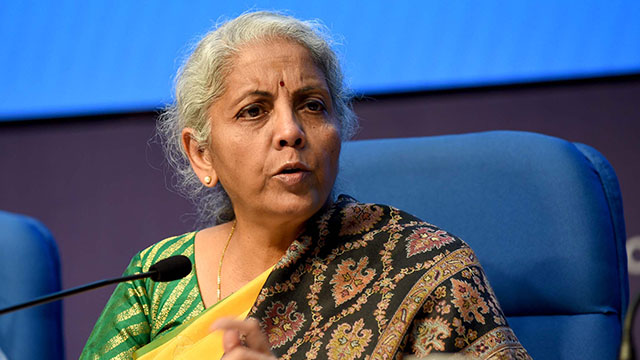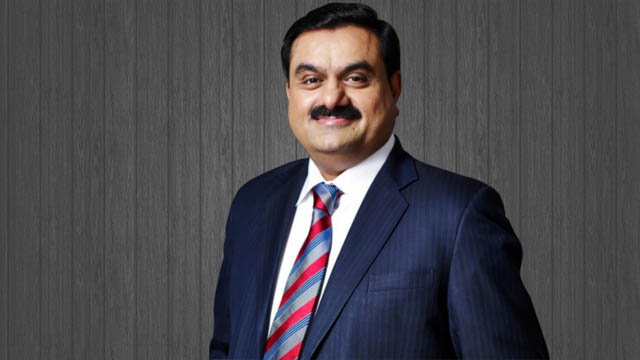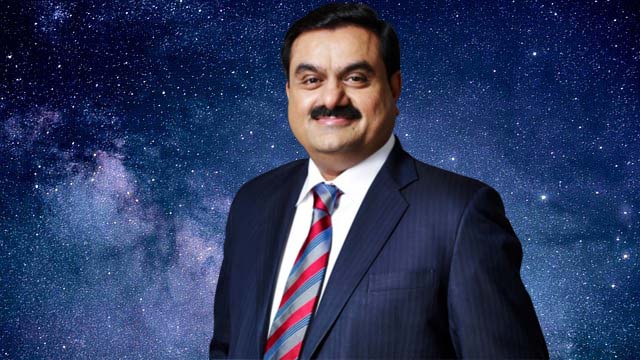Finance Minister Nirmala Sitharaman has tabled the Union Budget 2023-24, her last full budget before the 2024 general elections, focusing on upcoming elections in different states. The Ministry of Finance claimed that the Union Budget 2023-24 has been prepared to boost overall economic development and job creation.
The finance minister has claimed in her Union Budget 2023-24 that the government will work on two broad areas – opportunities for citizens with a focus on youth, growth and job creation, and to build a strong and stable macroeconomic environment conducive to growth.
The Union Budget 2023-24 has prioritised seven key areas, named Saptarishi (seven sages). These are:
- Inclusive development
- Reaching the last-mile
- Infrastructure and investment
- Unleashing the potential
- Green growth
- Youth power
- Financial sector
As per Sitharaman’s Union Budget 2023-24, India’s fiscal deficit fell from 6.7% in the financial year (FY) 2021-22 to 6.4% in the revised estimates (RE) of FY 2022-23. She has targeted a 5.9% fiscal deficit for FY 2023-24 as a budget estimate (BE).
The Union government will allow the States a fiscal deficit of 3.5% of their gross state domestic products (GSDPs), with 0.5% tied to power sector reforms announced during FY 2020-21 amid the Covid-19 pandemic.
However, the Union government aims to reduce the fiscal deficit below 4.5% by FY 2024-25. With larger capital expenditures, it’s not clear how the government will be able to meet the gap without any substantial avenues to increase its revenues.
The major source of the government’s earnings remains borrowing and other liabilities (34%). It’s followed by revenue from Goods and Services Tax (GST), which provides 17% of its earnings. Corporate and income tax come together in third place with a 15% contribution each.
Likewise, the government’s biggest expenditure is paying interest, which is 20% of its total expenditure. It’s followed by the States’ share of taxes and duties (18%) and the Union government’s schemes (17%).
Sitharaman has shown that the Union’s transfers to the States have increased in FY 2022-23 on a year-on-year (y-o-y) basis. The Union Budget 2023-24 has emphasised capital expenditure. Sitharaman has increased capital investment outlay by 33.4% to Rs 10 trillion in FY 2023-24, an increase of Rs 2.4 trillion, the highest one so far.
The Union Budget 2023-24 has emphasised the agricultural and cooperative sectors without substantially increasing the allocations for rural development. As per Sitharaman, the government will focus on the following:
- Building a digital public infrastructure, which will provide the farmers with an accessible, inclusive and informative solution.
- Setting up an agriculture accelerator fund to encourage innovative start-ups in rural areas.
- Launch an Aatmanirbhar Bharat horticulture clean plant programme to boost horticulture crop production.
- Supporting the Indian Institute of Millet Research (IIMR), Hyderabad, under the “Sree Anna” scheme to make India a global hub for millet through research.
- Providing targeted funding of Rs 20 trillion in agricultural credit to assist the animal husbandry, dairy and fisheries sectors.
- Setting up widely available storage capacities to enhance the farmers’ remuneration by enabling crop sale at an appropriate time.
The rural credit growth chart provided by the Union Ministry of Finance is given below:
The Union government is also increasing its expenditures on health and education. The following chart shows the allocations in the health and education sector.
Although the Union government under Prime Minister Narendra Modi has increased the allocation for the public health sector—mostly through insurance allocation and not resource building—from 1.4% of the GDP in FY 2019-20 to 2.1% of the GDP in FY 2023-24, the allocation for education has increased merely by 0.1 percentage point, from 2.8% in FY 2019-20 to 2.9% in FY 2023-24.
However, many of the important social sector expenditures of the government have suffered reduction or inadequate allocation. Although the Union Budget 2023-24 has shown that there has been an increase in the amounts transferred to the States from the Union, which is a constitutional responsibility of the latter, it didn’t increase allocations for some of the crucial social welfare projects, including the Mahatma Gandhi National Rural Unemployment Guarantee Act (MNREGA) and mid-day meals for children.
The graphics below depict how there have been either cuts or no significant increase in the BE for crucial social sector spending in Union Budget 2023-24.
The new tax benefits announced by Sitharaman are confined only to those who have opted for the new regime, under which investment and expense benefits are not available. Sitharaman has increased the income limit for a rebate on income tax from Rs 500,000 to Rs 700,000 in the new regime.
The highest surcharge rate on income above Rs 50m will be reduced from 37% to 25% under the new regime, apparently to benefit the rich. This will have an impact on India’s revenue. The tax exemption limit on leave encashment on retirement has been extended to Rs 2.5m for non-government salaried employees.
The finance minister didn’t announce any significant benefits for the industries but extended some of the schemes offered earlier, especially to start-ups.
In a nutshell, the Union Budget 2023-24 is full of promises and rhetoric; however, even in the election year, this budget brings no substantial benefit for the common people, except for the long-term infrastructure and railway development projects.
Tanmoy Ibrahim is a journalist who writes extensively on geopolitics and political economy. During his two-decade-long career, he has written extensively on the economic aspects behind the rise of the ultra-right forces and communalism in India. A life-long student of the dynamic praxis of geopolitics, he emphasises the need for a multipolar world with multilateral ties for a peaceful future for all.





